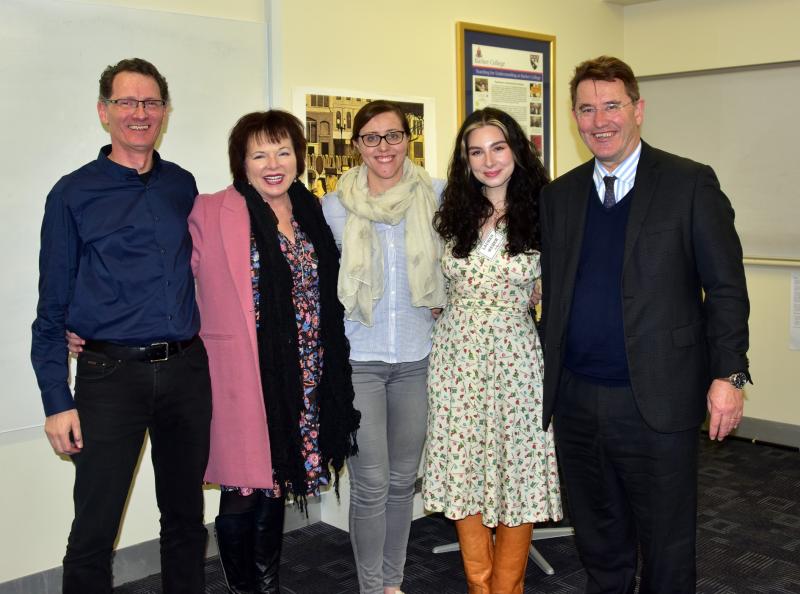Celebrating the Reimagining Writing Imaginarium 2021
Written by The Better Strangers Team in Teaching Activities | 28.05.2021
Every year the Better Strangers project runs an Imaginarium for teachers hosted by our partner school Barker College (Sydney). An Imaginarium is a series of 2-hour workshops run over a number of weeks during the school term. Every Imaginarium is informed by our ‘Five Principles of Imaginaria’ which emphasise: the promotion of fresh thinking about subject content and education; the awareness of professional constraints on teachers without being too confined by them; the inclusion of teachers from multiple institutions to maximise sharing of ideas and expertise; the exploration of a unifying theme while remaining open to unexpected emergence of ideas; and the value of imagination and creativity in all teaching and learning. Some of our previous Imaginaria have become online modules on our Shakespeare Reloaded website, such as The Shakespeare Imaginarium and Shakeserendipity.
The 2021 Imaginarium was prompted by a relatively new Module in the New South Wales Year 12 English Syllabus called ‘The Craft of Writing.’ Over three weeks, the ‘Reimagining Writing Imaginarium’ focussed on three topics: inspiring imaginative writing; crafting dystopian texts; and understanding persuasive and discursive writing. This was a lively and uplifting series of workshop attended by about 30 teachers from various Sydney schools. Each 2-hour workshop involved a prepared presentation by the facilitator and a highly interactive format including substantial discussion and sharing of expertise and experience.

The ‘Reimagining Writing’ Team: Liam Semler (University of Sydney), Jackie Manuel (University of Sydney), Claire Hansen (James Cook University), Lauren Weber (University of Sydney) and Andrew Hood (Barker College).
In Workshop 1, Prof. Jackie Manuel focused on a core component of ‘The Craft of Writing’ Module: imaginative writing. She framed the session by providing a brief overview of evidence-based models of teaching imaginative writing and highlighted the alignment between the principles of these models and the Syllabus Rubric for ‘The Craft of Writing’ module. Participants, working in pairs and as a whole group, engaged in a number of hands-on practical strategies for generating imaginative writing, which were then discussed in terms of the Syllabus requirements. We explored a range of resources such as writing prompts and visual and tactile stimuli and considered how these may be adapted to particular classroom contexts and student cohorts. In the second half of the session, participants discussed their memorable moments teaching imaginative writing and shared effective approaches and resources for optimising student engagement and achievement. The session concluded with a wide-ranging discussion of the key challenges of teaching imaginative writing in senior English and the most effective pedagogies to address these.
In Workshop 2, Lauren Weber, our project research assistant and doctoral student led a two-part session which began with a guided discussion about the qualities of dystopian fiction students and teachers may draw on in creative writing. Participants discussed what features of dystopian fiction make it a compelling, but difficult genre to craft creatively, especially for students. The group discussed a variety of textual examples including Alfonso Cuarón’s film Children of Men (2006), the short story ‘The Pedestrian’ (1951) by Ray Bradbury and George Orwell’s 1984 (1949). In the second part of the session, participants engaged with a creative writing task designed by Lauren called ‘Greetings from dystopia’ where second-hand postcards were used as stimulative prompts for interrogating the creative relation between utopias and dystopias. The entire session (including the Better Strangers team!) wrote their own short pieces of dystopian fiction as part of the session and then discussed how the writing activity could be tailored to fit the unique needs of their classrooms and enriched by their professional expertise.
In Workshop 3, Prof. Liam Semler explored persuasive and discursive writing. The workshop commenced with the formal definitions of these terms in the NSW curriculum documents, but soon moved to consider expanded ways of thinking about essay structure and purpose. Participants discussed the merits and demerits of teaching via standardised essay structures and shared their experience in helping students understand and write discursively. The discursive form, unlike the more directed and formalised structures of evidence-based persuasive essays, invites students to compose work that is lively, aesthetically pleasing, internally varied and personally resonant, connecting to contemporary issues, opinions and cultural examples. Opinion pieces, feature articles and literary essays were among the forms discussed in this context and it was agreed that this is quite a challenge to teach such supple, lively and accomplished writing to students. Participants were asks to consider what visual metaphors might be suggestive of persuasive essays (such as an image of the muscles of an arm as all its component parts cooperate to produce a fist) or discursive essays (such as an image of a rainforest in which beauty, liveliness and meaning are produced via the co-operation of infinitely varied, shaped and coloured, living parts). The workshop concluded with some ideas around aesthetic structuring principles and mind-mapping ideas for discursive writing via online tools like GoConqr Mindmaps.
Teachers’ feedback indicated that this sort of professional learning was encouraging, practical and inspiring. Teachers commented on the “rich diversity of ideas”, the “new ways to engage students”, and the “collegial discussion”. One participant noted that “it’s rare to attend a PL where the time flies and thoughts are provoked!” Some teachers have already implemented ideas and strategies from the Imaginarium in their classrooms, with the team’s creative writing prompts, dystopian fiction activities and discursive writing work now actively in play across Sydney classrooms.
